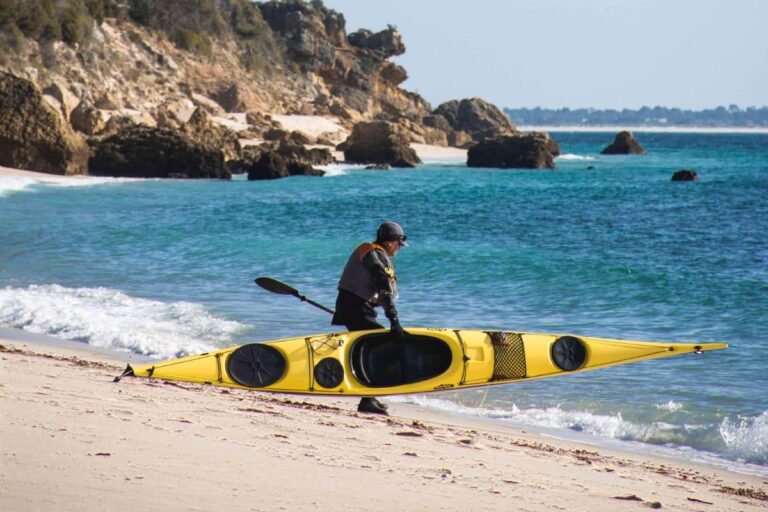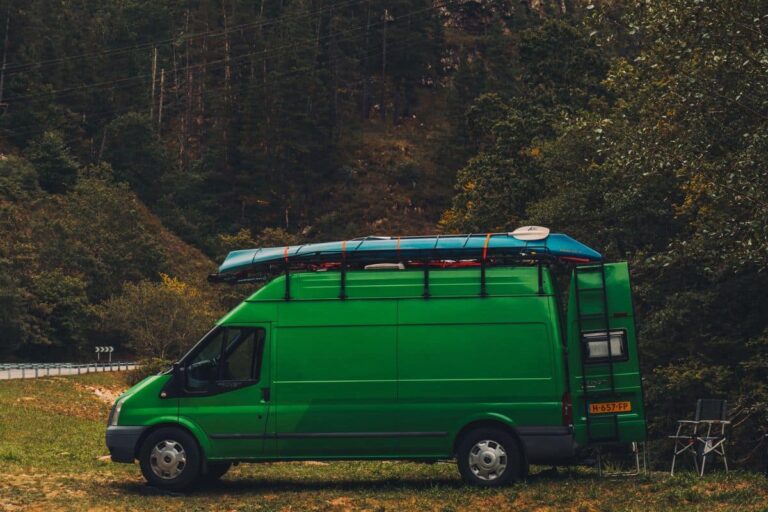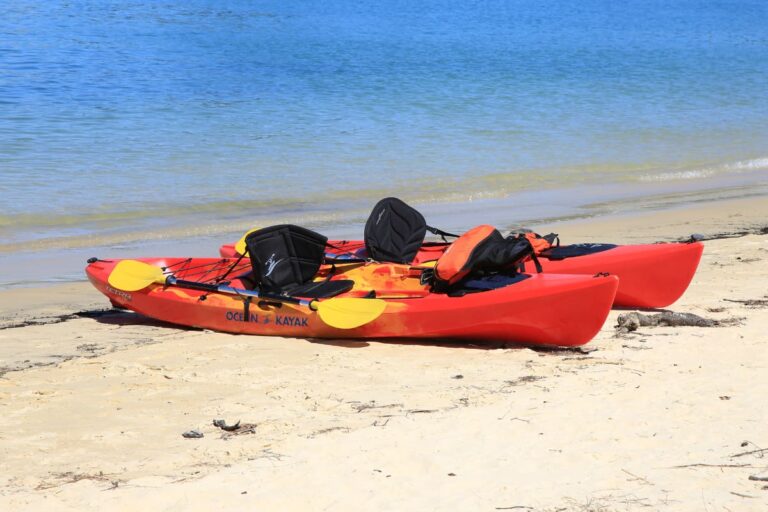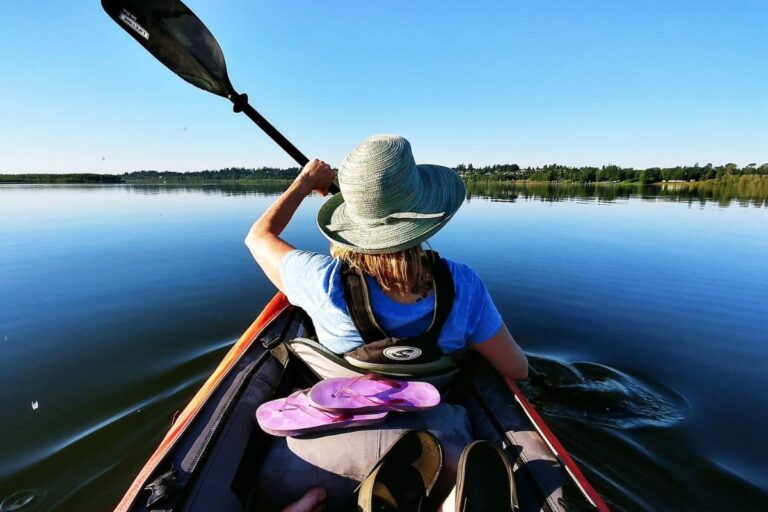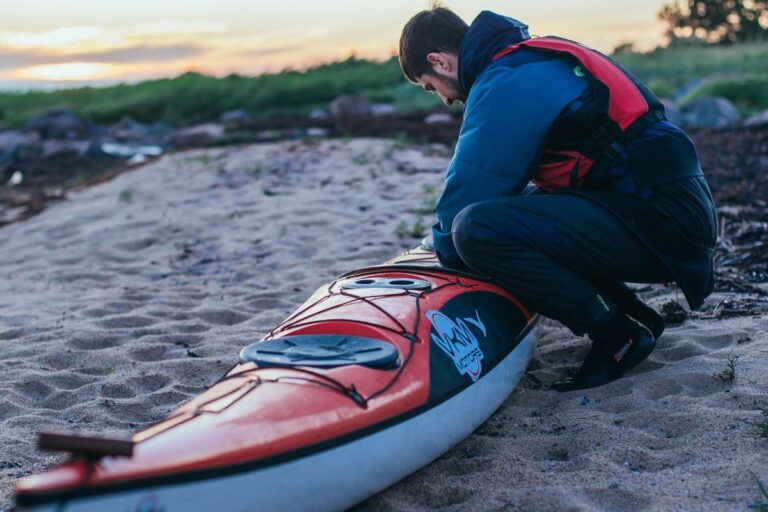How To Use A Kayak Cart? (The Correct Way)
Many people who enjoy kayaking find that there is one major obstacle standing in the way of going out on the water as often as they’d like: transporting their kayak over land and into the water.
While ideally, you should be able to carry your kayak independently, this task can be difficult or even impossible for some people, which is why it can be helpful to learn how to use a kayak cart.
In order to use a kayak cart, or kayak trolley, you need to position your kayak on top of the cart and engage the securing system (which varies from cart to cart). Always check that your kayak is securely in place before moving the cart, or it could come loose and lead to injury.
Once you’ve secured your kayak to the cart, you can transport it to the water, remove it from the cart, and enjoy your paddling adventure!
How Do You Use A Kayak Cart?

There are many kinds of kayak carts, so the proper way to use your cart will vary depending on which type you have.
The purpose of kayak carts (or trolleys) is to make it easier to transport your boat between your vehicle and the water.
Even with a kayak cart, you’ll still need to lift the kayak down from your vehicle and be able to maneuver its weight enough in order to secure it on the cart.
Kayak carts don’t save you from having to lift the kayak completely, but they do eliminate the need for carrying it from your vehicle to the water on what is often uneven terrain.
If you can’t park your vehicle near the water, these carts are an ideal solution.
Next, let’s dig into this ultimate guide on different kinds of kayaking carts and how to use them properly.
Carts With Scupper Holes
You can only use this kind of kayak trolley if your kayak has “scupper holes”, which is rarely the case with sit-inside kayaks.
Scupper hole carts are primarily designed to be used with sit-on-top kayaks, and if your kayak doesn’t have scupper holes, you won’t be able to secure it to this type of cart.
This cart has two long pole rod holders, which will slip into the scupper holes of a sit-on-top kayak – this method eliminates the need for straps to hold your kayak to the cart.
This type of cart doesn’t have any kind of platform for the kayak to sit on, and often only has two wheels, which makes it smaller and generally lighter than most strap-style carts.
One of the many appealing aspects of this cart is that it is easy to transport and doesn’t take up much room.
If you have a sit-on-top kayak with scupper holes, this style cart is an ideal option, since it can be easier and faster to get your kayak on and off without the need to mess around fastening and unfastening straps every time.
When purchasing a kayak trolley, it’s crucial to look for puncture-free wheels, sometimes called “flat-free tires”.
These pneumatic tires work much better than air-filled tires, and will make your kayak easier to push, since you don’t have to worry about getting a flat.
How To Use A Scupper-Hole Kayak Cart
1) Put the kayak trolley on the ground next to your kayak.
2) Turn your kayak onto its edge so that you can access each scupper hole, and remove the plugs from the holes at the stern of the kayak, since they will be aligned with the cart’s poles when you get the kayak into place.
3) Turn the cart onto its side, and line the poles up with the scupper holes you just freed.
Remember, for the cart to balance correctly, you want the gaps behind the kayak’s seat, not further forward.
4) Lift the cart and the kayak upright, with the kayak on top, ensuring that the poles don’t slip out while it moves – these poles should keep your kayak secure on top of the cart.
5) Check that your kayak is in position and balanced correctly.
For example, neither the prow nor the stern should touch the ground, and there should be an even weight distribution that allows you to pull the cart easily without tipping.
6) Don’t forget to set your paddle inside your kayak before taking it to the water.
You can also place any other equipment and extra gear you may have inside the kayak to avoid having to make a second trip.
7) Pull the kayak cart down to the water’s edge.
You should find that the cart moves quickly while the kayak remains stable on the cart.
8) When you reach the water’s edge, tip the cart and the kayak back onto their sides.
9) Next, slide the kayak free from the poles and replace the scupper plugs, after which you should be able to push the kayak into the water with no problem.
Carts With Straps
You’ll find that a cart with a strap is quite versatile and most useful for any kayak without scupper holes, such as a sit-in kayak, or even a canoe.
These carts have a platform that offers cradle support for the boat, and they use a strap to hold the kayak stable while you pull it along.
How To Use A Kayak Cart With Straps
1) Position the cart and the kayak on the ground beside each other, so they are parallel.
2) Lift the stern and gently slide it into the cradle support of the kayak trolley, being careful not to scrape it – a padded platform will protect the kayak from damage.
3) Now move to the other end of the boat and lift the bow safely onto the cart, doing so slowly so that you don’t dislodge the stern.
4) Position your kayak on the trolley so that the kayak is in a straight line – this will allow you to tighten the strap properly.
5) Be sure your kayak is balanced – this will vary for different styles of kayaks, but note that balancing the boat does not necessarily mean that it will be positioned evenly (lengthwise) on the cart.
Usually, the kayak’s seat will be closer to the center, because the bow is longer than the stern – keep working at this balance until the kayak doesn’t tip readily in either direction.
Once you’ve done this task a few times, you get a better idea of where the balance point on your kayak is, and you should have no problem positioning it correctly and more quickly every time.
However when you’re just starting out, you’ll probably need to spend time sliding it back and forth until you get a feel for it.
Note that your kayak should be central in width, making it easy to strap it down properly.
6) Take hold of the strap and secure it to the leg of the cart, wrap it over the top of the kayak (ensuring that it’s not skewed), and then clip it to the shank on the opposite side.
Slide the buckle to the top, and then use it to tighten the strap until the kayak is secure.
7) Test that your kayak is firmly in place and won’t slip off – otherwise it will be dangerous if it falls while you are moving it, and it might also damage the kayak.
You may want to use additional straps to ensure that the total weight of the kayak is securely fastened.
A bungee cord is a handy strap that you can use for extra security.
It may take a while to get used to putting your kayak on the cart, but with a bit of practice, you’ll be able to do so very quickly and easily.
8) Remember to set your paddle and any additional gear inside your boat before leaving your car.
9) Transport your kayak to the water’s edge and unfasten the strap.
10) Gently slide the boat’s prow off the cart, followed by the stern, and you’re ready to launch!
Why Should I Use A Kayak Cart?
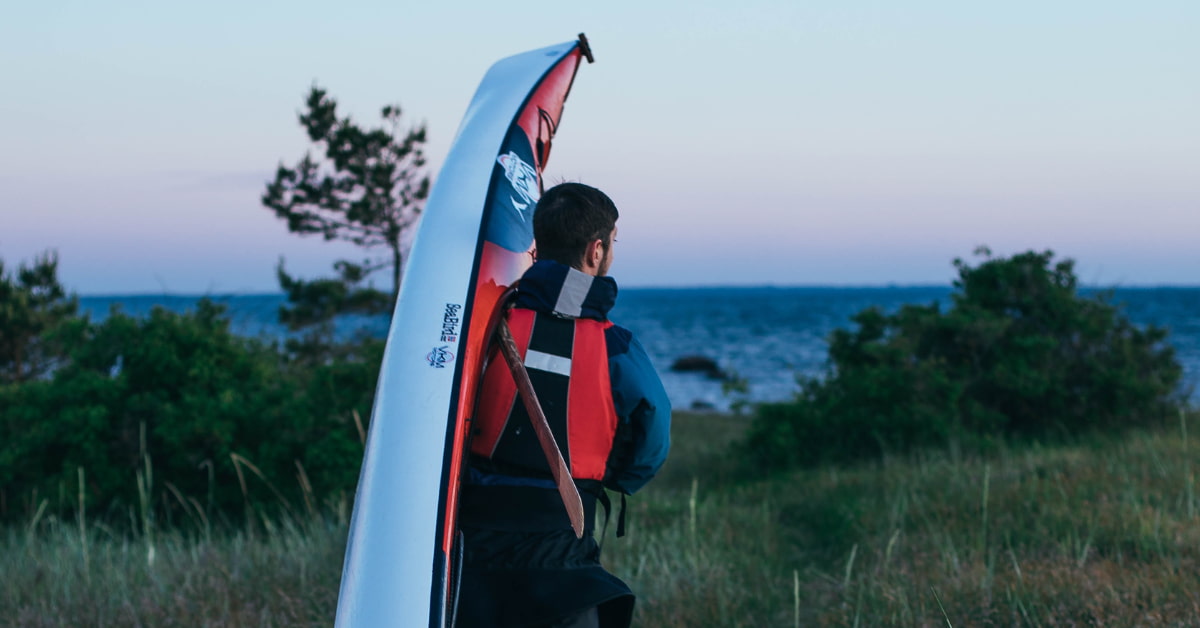
You might be wondering if you really need to use a kayak trolley.
After all, it’s just another thing to store and transport each time, and some people find that they have little use for one.
However, there are enough advantages that you may find a kayak cart to be your newest essential piece of kayaking equipment.
Advantage One: Safety
Using kayak carts can reduce your risk of injury.
Remember that kayaks are very heavy, and if you’re also trying to transport gear to the water, it’s easy to hurt yourself.
Most of us would agree that we’d like to avoid back injuries or other injuries caused by falling while carrying an unstable load on rough terrain!
Using a kayak cart allows you to have more stable footing, and for many, injury prevention is the primary benefit of using a kayak cart.
Advantage Two: Speed
Depending on how far you need to park from the shore, a kayak trolley can significantly affect how quickly you can get out on the water.
It takes a little while to get accustomed to setting up your kayak and cart quickly, but once you get the hang of it, you should be able to load and unload your kayak very swiftly.
You can pull your kayak across land far more quickly on a cart than you can carry it.
Using a cart also means you might not need to make as many trips back to your vehicle to grab the gear you couldn’t carry the first time around.
Advantage Three: Energy Conservation
With a cart, you don’t need to spend nearly as much energy getting your kayak to the water.
This leaves you with more energy for paddling, which can allow you to enjoy a longer and easier trip on the water.
You might find that you particularly appreciate your kayak cart at the end of the day when the muscles in both of your arms are aching, and you just want to get home!
Where Should You Store a Kayak Cart?

Because kayak carts are pretty robust, they can be stored anywhere that works for you (although they should not be left outside in the elements) – a garage or garden shed may be a good option.
Don’t put your kayak cart somewhere that’s difficult to access though, or it won’t be very helpful!
Can You Build a DIY Kayak Cart?
Many people make a DIY kayak cart – just remember that it needs to be safe, strong, and reliable enough to hold the weight of your kayak and gear.
You’ll need to source wheels that can handle rough terrain, and ensure that your cart is sturdy and balanced so as not to be a liability.
Can You Use a Kayak Cart with a Bike?
If you don’t want to drive to the water, you might find it easier to buy a kayak trolley that is designed to be coupled with a bike.
These carts are available and can make your life a lot easier when it’s time to travel to the water!
Conclusion
To use a kayak cart, simply lift your kayak onto the cart and secure it using that particular cart’s mechanism.
Ensure that your boat is balanced and not likely to fall off if the cart hits a bump or stone, and then pull it down to the water.
Your kayak cart should reduce the challenge of getting your kayak from your vehicle to the water, leaving you with more free time and energy to paddle.
Now you’re ready to unload your kayak, and begin your paddling adventure!
Table of Contents

